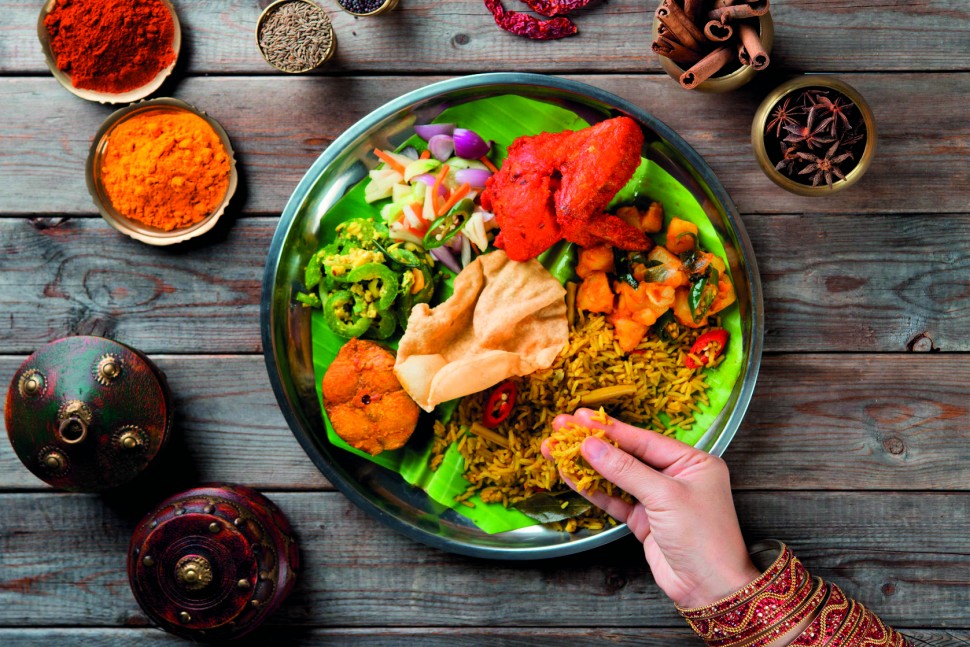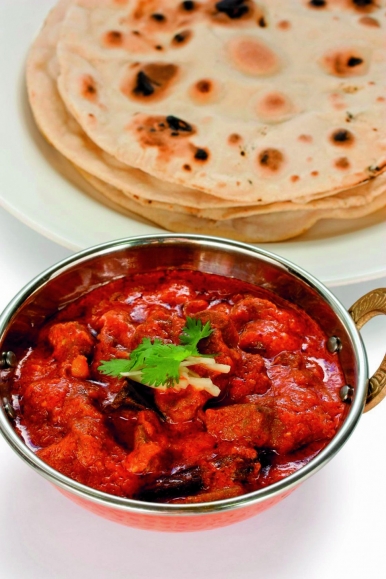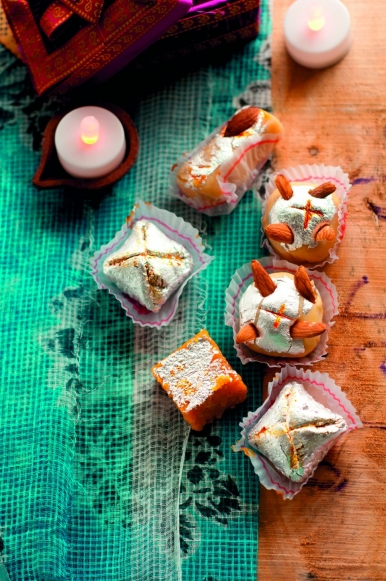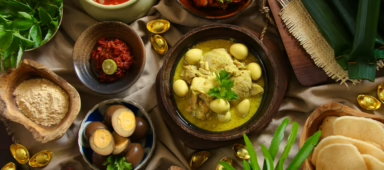A fascinating array of dishes makes Diwali easily a festival of delights

One of the many wonders of the great Indian cuisine is its magnificent sweet section. The list is so vast and exciting that Ibn Battuta in one of his travelogues once wrote that if he could put every single Indian sweet in a line, it could cover the three seas, three times over. “There is a sweet for every occasion, and season,” he noted. A few centuries later, Shaikh Abu’l Fazl, the chronicler of Ain-i Akbari and Akbar Nama, wrote that the temptations “cascade like a sea of delicious sweetness. Not one was like the other.”

Fazl’s account was about history being made as the Mughal emperor Akbar transformed Diwali from a community-based festival into a court celebration (and later pan-Indian one) with a simple act of sending a platter of sweets to Birbal (a Hindu courtier) on the day. The platter, many say, was an assortment of Persian and Rajasthani sweets. In turn, Birbal sent a bigger platter with every single sweet from India, especially made by his wife. It was the beginning of Diwali decadence. By the time Shah Jahan became Emperor, Diwali was a five-day, lavish affair complete with rituals and a celebratory feast of sweets.
Since then, whether celebrated as Bandi Chod Divas (for the Sikhs), Kali Puja in West Bengal or the ancient Naraka Chaturdesi in Southern India, sweet and savoury dishes have remained a big part of the day. In fact, each region today has its own platter for Diwali, with one or two dishes especially made for the occasion. In Bengal and Assam, it is celebrated with manghso jhol and bhaat (mutton curry and rice); Kashmir has Shufta (a lavish sweetmeat made of dry fruits, spices and sugar); the Kumaon region has bal mithai (fudge-like delicacies coated in tiny sugar balls); and Punjab, with Pinni (a form of ladoo that is both an indulgence and for health).

Then there’s an array of regular sweets, which take on a new avatar during the festival of lights. Jalebi, a festival regular, for instance becomes sindhi geear (a larger jalebi) or is served with an aromatic, dried fruit-laden layer of rabri; geevar, a Marwari Sweet, is presented with a thick layer of cream; and malpua (sweet, flour-based fritters) with an extra layer of malai (cream). Likewise, for the range of Indian ladoos, they either go bigger or are dressed in the finest of varq (silver and gold). There is also a small slice of seasonal sweets like the gajrela or gajjar ka halwa, made of black carrot, especially in the North, and the Chettinad Ukkarai, a type of halwa made of lentils and jaggery.
The sweet decadence that’s really big on Diwali would be fried sweets and those made with khoya (evaporated milk) drizzled with sugar syrup and copious amounts of dried fruits. Whether it’s the extremely rich moong dal halwa, the omnipresent gujjia, which one can find in variations across India, or Rampur’s iconic Mirch Ka Halwa, a dish made with green chillies and liberal amounts of khoya that dull its pungency, these make a rare appearance during this festival, along with kheer (rice pudding) of all kinds, including the traditional Paal Payasam and the Chawlo Ki Kheer. What’s unique is that while both are versions of the traditional Indian rice pudding, Paal Payasam is best eaten warm and Chawlo Ki Kheer is always served chilled, garnished with fresh rose petals.

Sugar crystals and figurines are also part of Diwali. Kheel Batashe, made of puffed rice and sugar drops, can be found in every Diwali sweet box, while Khilone (sugar toys) are a customary giveaway, especially to younger kids.
Given that Diwali signifies the start of winters, the festival is blessed with a lot of warm food and sweets: imarti, gulab jamun, Peda (a dense, fudge-like sweet) and the Shahi Tukda (the Indian version of bread pudding) form an intrinsic part of Diwali across the country. Among the savoury, the two dishes that hold all the attention are puris and kachoris (deep-fried breads with fillings). From dal ni puri, a Parsee community speciality, to puri stuffed with peas and lentils, puran poli (sweet lentil-filled paratha) to the famous Jodhpur samosa (filled with fragrant spices instead of potatoes), much can be had during the festival. In Benares, it is popular to eat sooran (yam) ki sabzi, dal, puri and kheer, and in Madhya Pradesh, bachka (vegetable fritters) and puri.

Balushahi, which is a flaky pastry, deep-fried, soaked in sugar syrup and garnished with dried fruits, and the Sindhi Palagir, which is much like the Maharastrian Gujia, but with multiple layers, are equally sought after. Squishy treats like Gulgule and Chenna jhilli (made of deep-fried ricotta cheese dipped in fragrant sugar syrup) are also part of the sweet cascade that dominates Diwali. Interestingly, there are quite a few varieties that are healthy and yet fit into the criteria of a rich indulgence, such as the Srikhand and Basundi. While the former is made by evaporating milk and resembles the famous rabri, the latter, a Western India specialty, is made of cardamom, sugar and hung curd.
Diwali in Goa and Maharastra means a choice of four different kinds of poha (flattened rice). Locally known as fau, there is a choice between bataat fau (with piquant potatoes), kalayile fau (with jaggery and spices), doodhatlye fau (with milk), rosathle fau (with cardamom-infused coconut) and a simple sweet poha prepared with curd or buttermilk. The Jain community, which celebrates Diwali as the day Lord Mahavir attained nirvana, the star attraction is the Khara Khaja, which is made in sweet, savoury and plain, and is served with aam ka aachar (mango pickle).

While most parts of the country follow a vegetarian diet and hence, are high on sweet consumption, there are a few exceptions to the rule, where the star dish of the occasion is mutton with rice. One such exception is in Bengal, where Diwali is often celebrated with a tasteful, spicy mangsho jhol and fragrant plain rice. Over the years though, the Calcutta Chicken Biryani has become more popular, and is often a feast’s meal of choice. It is the same in Assam, where meat and seafood dominate the festive palate.
So how does a country blessed with such extraordinary sweet decadence navigate its way? With Kanji Vada, a non-alcoholic Marwari preparation, and Deepavali Marundu, a concoction made of ingredients like carom seeds, poppy seeds, dry ginger, dates, nuts and ghee. A few glasses, and you can literally have the cake and eat it too.





